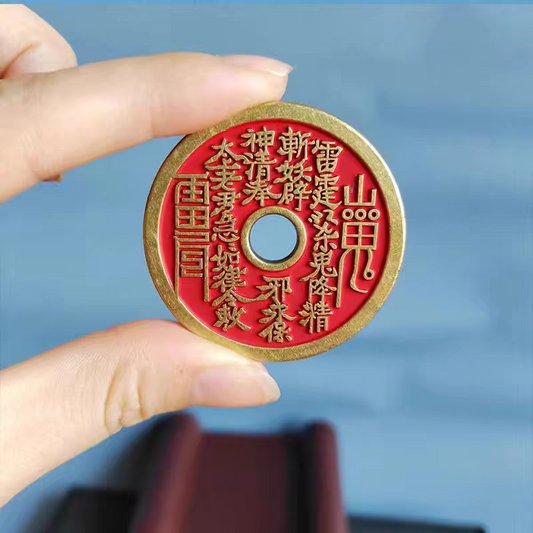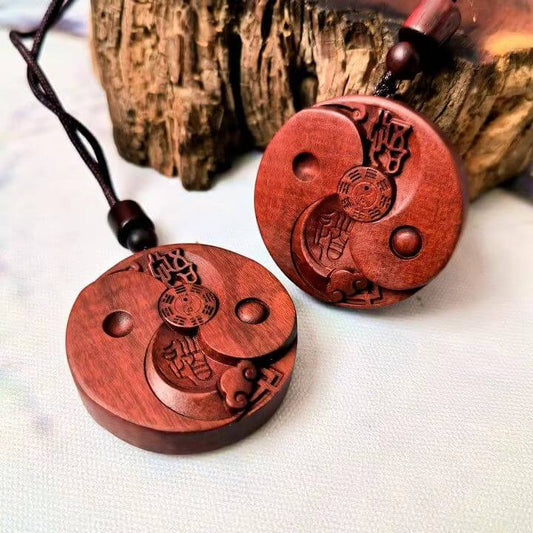
What are the symbolic meanings of Taoist clothing and ritual implements?
paulpengShare
Taoist Clothing and Ritual Tools: Symbols of Harmony and Divine Connection
In the mist-shrouded mountains of China, where ancient wisdom meets spiritual practice, Taoist priests don robes and wield tools that are more than mere garments and instruments—they are living symbols of a philosophy woven into every thread and curve. Taoist clothing and ritual tools embody the faith’s core principles: harmony with nature (Tao), balance between heaven and earth, and the pursuit of immortality. Let’s explore how these elements reflect Taoism’s spiritual essence, designed for a global audience to understand and appreciate.
The Language of Clothing: Robes, Crowns, and Colors
Taoist attire, called fa fu (法服,“sacred garments”), is a hierarchy of symbols. Each piece—robes, crowns, sashes—represents a practitioner’s rank and spiritual journey.
Robe Design: Unity in Fabric
Taoist robes, loose and flowing, mimic the natural world. The he chang (鹤氅,“crane cloak”) evokes the bird’s grace, a symbol of longevity. Robes are often dyed in earthy tones: black (yin, the feminine, receptive force), blue (wood and growth), and yellow (the earth’s center, stability). The tai chi symbol (yin-yang) embroidered on garments embodies cosmic balance—no light without dark, no action without stillness.
Higher-ranking priests wear the pi (帔,a cape-like shawl) with 24 or 32 stitched panels, representing the 24 节气 (solar terms) or 32 heavens. These numbers tie the wearer to the rhythm of the universe, merging human existence with celestial order.
Crowns: Gates to the Divine

Headwear is a portal to spirituality. The Sanxing Guan (三星冠,“Three Stars Crown”) honors the gods of Fortune, Prosperity, and Longevity. The Wuyue Zhenxing Guan (五岳真形冠,“Five Sacred Mountains Crown”) features peaks symbolizing earth’s stability. Novices wear simple black 巾 (scarves), while masters don elaborate crowns, each shape a map of Taoist cosmology.
Footwear: Grounding in Earth
Shoes, often black or brown cloth, symbolize humility. Cloud sandals (云履) feature wavy soles, mimicking the path to heaven. In rituals, priests may don wooden clogs, connecting them to the earth’s energy.
Symbolic Unity: Every garment is a microcosm of Taoism. The robe’s length (3.6 feet for men, 2.4 for women) mirrors the Taoist belief in sacred numbers (3 for heaven, 2 for earth). Even the sash, wrapped three times, represents the Three Treasures: compassion, frugality, and humility.
Ritual Tools: Bridges Between Worlds
Taoist 法器 (ritual tools) are extensions of the priest’s connection to the divine, each with a purpose rooted in nature and mythology.
The Magic of the Sword (法剑)
 The fa jian (法剑), often made of 桃木 (a wood said to repel evil), is both a weapon and a symbol of authority. Engraved with stars and 符咒 (magic spells), it cuts through spiritual darkness. The Qingfeng Jian (青锋剑,“Azure Edge Sword”) represents the power to uphold justice and protect the innocent—a physical manifestation of the Taoist vow to balance chaos.
The fa jian (法剑), often made of 桃木 (a wood said to repel evil), is both a weapon and a symbol of authority. Engraved with stars and 符咒 (magic spells), it cuts through spiritual darkness. The Qingfeng Jian (青锋剑,“Azure Edge Sword”) represents the power to uphold justice and protect the innocent—a physical manifestation of the Taoist vow to balance chaos.
The 拂尘 (Duster): Sweeping Away Illusion

A horsehair or bamboo duster, the fu chen symbolizes the purification of mind and space. Its soft bristles “sweep” negative energy, while the handle (often carved with dragons) embodies strength. In rituals, it guides prayers upward, bridging human intent with divine ears.
The 八卦镜 (Bagua Mirror) and 葫芦 (Gourd)

The Bagua mirror, etched with the eight trigrams, reflects harmful energy (煞气) and attracts harmony. The gourd, a symbol of immortality, holds herbs or holy water—its rounded shape a metaphor for the universe’s endless cycle. Both tools are talismans of protection and healing.

Incense and Bell (铃)

Incense (xiang) spirals upward, carrying prayers to the heavens. The ling (bell), rung during rituals, disrupts mundane noise, creating a sacred space. Its sound echoes the Taoist belief that vibration connects all things.
Colors and Fabrics: Nature’s Palette
Taoist attire favors natural materials: silk (luxury, celestial connection), cotton (simplicity), and hemp (durability). Colors are chosen for their cosmic meaning:
- Red: Fire, joy, and protection (worn during festivals).
- Purple: Royalty of the Tao (reserved for high priests, symbolizing wisdom).
- Yellow: Earth and the center (worn by those aligned with earthly balance).
No bright patterns—only subtle embroidery of cranes (longevity), pine trees (endurance), and lotus (purity). These motifs remind practitioners to live in harmony with nature’s cycles.
Sects and Modern Adaptations
While Taoist sects (如全真派 Quanzhen and 正一派 Zhengyi) share core symbols, attire varies. Quanzhen priests, monastic and ascetic, wear simple black robes. Zhengyi priests, more integrated with community life, don colorful ritual garments. Today, modern Taoists adapt traditional styles—machine-woven fabrics and simplified designs—but the symbols remain: a collar’s 12 stitches for the 12 months, a sash’s three knots for heaven, earth, and humanity.
The Ritual of Attire: Dressing as Devotion
Putting on Taoist clothing is a sacred act. Novices undergo a robe-giving ceremony, where each piece is blessed:
- Shoes: “Step on the path of virtue.”
- Skirt: “Embrace humility, the foundation of growth.”
- Robe: “Wrap yourself in the Tao’s wisdom.”
- Crown: “Raise your mind to the heavens.”
This ritual mirrors Taoist philosophy: clothing is not decoration but a spiritual contract. Every fold is a reminder to live wu wei (无为,effortless action), every symbol a mantra.
Beyond Fabric and Metal: A Philosophy of Design
Taoist clothing and tools are alive with meaning. A crown’s peaks are not just decoration—they are mountains where immortals dwell. A sword’s edge is not just metal—it is the boundary between chaos and order. Even the simplicity of monastic robes reflects jian pu (俭朴,frugality), a Taoist virtue.
For outsiders, these symbols offer a window into Taoism’s heart: a belief that the sacred is woven into the mundane. A priest’s robe is a map of the universe; a duster, a dance with the wind. Each element whispers: Align with nature, and you align with the Tao.
Conclusion: Wearers of the Cosmos
Taoist 服饰与法器 are more than objects—they are wearable poetry, tools of transcendence. They remind us that spirituality is not abstract; it is stitched into fabric, cast in metal, and worn with intention. As a Taoist priest once said, “Clothe your body in the Tao, and your spirit will soar.”
For the curious traveler in the spiritual world, Taoism’s garments and tools offer a universal language: harmony in form, purpose in every detail. They are a testament to a 2,500-year-old belief that humanity’s place in the cosmos can be worn, wielded, and lived—one stitch, one sword swing, one breath at a time.











